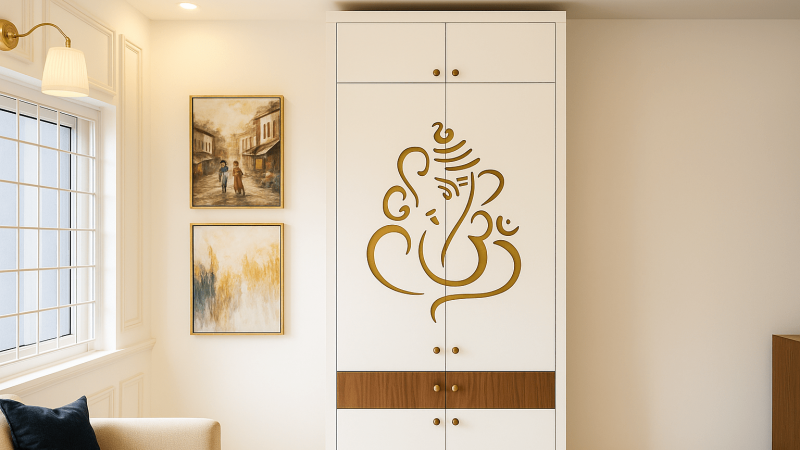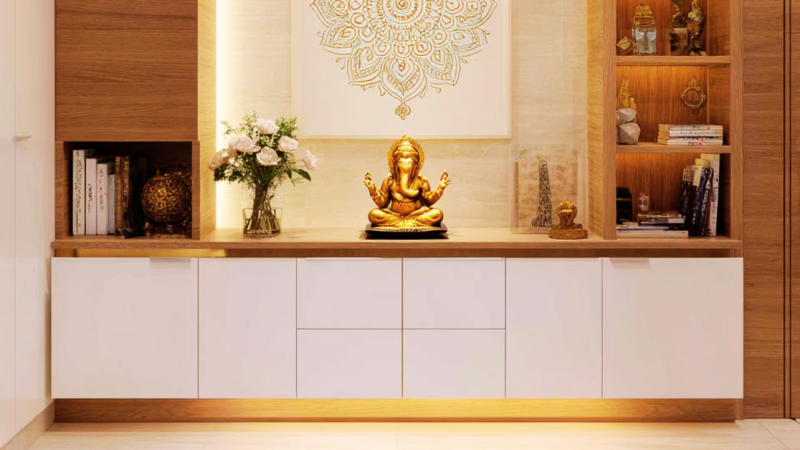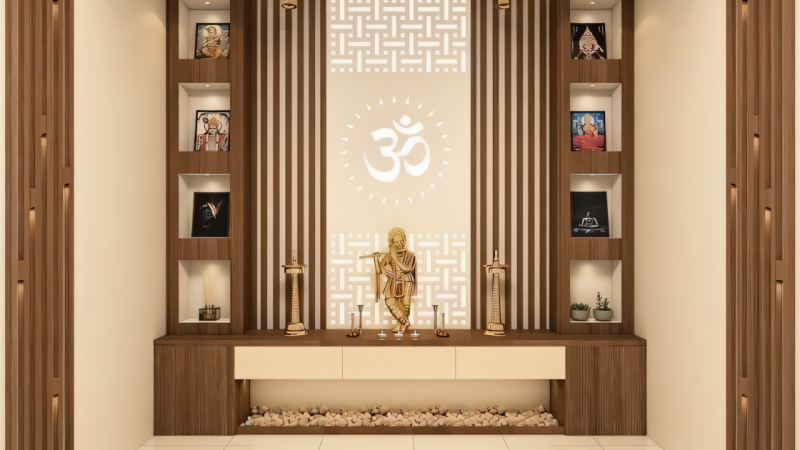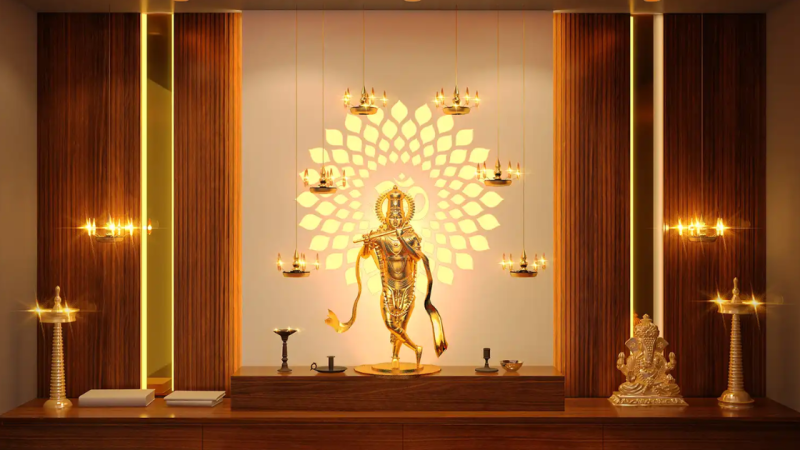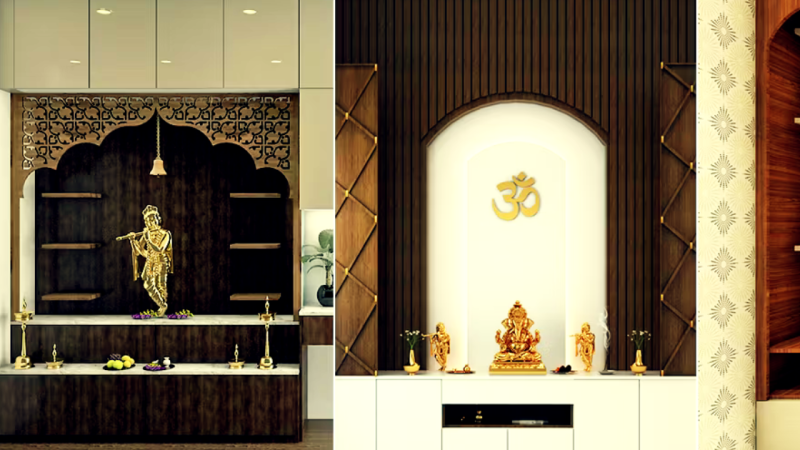Pooja Room Design Mistakes to Avoid in 2025

A pooja room is more than just a corner of your home—it’s a sacred space that radiates peace, positivity, and spiritual energy. In 2025, homeowners are blending tradition with modern aesthetics to create beautiful prayer spaces. But while trends evolve, some common mistakes can reduce the functionality, comfort, and sanctity of your pooja room.
If you’re planning to design or renovate yours, avoiding these pitfalls will help you create a space that is both visually appealing and spiritually uplifting.
1. Ignoring Vastu Principles in Pooja Room Design
Even in contemporary homes, Vastu Shastra plays an important role in pooja room design. Ignoring these guidelines may not only disrupt the energy flow but also impact the harmony of your home.
Common mistakes:
-
Placing the pooja room in the bedroom or directly under a staircase.
-
Positioning idols facing the wrong direction.
-
Choosing the south direction for the altar instead of northeast (the most auspicious).
Pro Tip: If you’re short on space, consult a designer who understands Vastu-compliant pooja room design so you can adapt the principles to your floor plan without compromising aesthetics.
2. Overcrowding the Space with Decor and Idols
A cluttered pooja room can feel overwhelming and reduce the peaceful vibe you’re aiming for. Many homeowners try to add too many idols, decorative items, or storage units in a small space.
Why this is a mistake:
-
Overcrowding distracts from the focal point—the deity.
-
Excess items are harder to clean, leading to dust accumulation in a sacred space.
Better approach:
-
Keep only a few carefully chosen idols.
-
Opt for simple, functional shelves for storing incense, bells, and prayer books.
-
Remember: in minimalist pooja room design, less is often more.
3. Poor Lighting Choices in Pooja Room Design
Lighting sets the tone for your prayer sessions. A common mistake is using harsh or inadequate lighting, which can make the space feel either too sterile or too dim.
Avoid these lighting errors:
-
Using bright white fluorescent lights that feel cold and unwelcoming.
-
Not including focused lighting above the idols.
Lighting tips for 2025:
-
Use warm LED lights to create a serene glow.
-
Integrate concealed lighting strips in shelves or back panels.
-
Consider decorative brass or wooden hanging lamps for a traditional touch.
Pooja Room Door Designs: Traditional vs. Contemporary Options
4. Using the Wrong Materials for Surfaces and Storage
Choosing inappropriate materials for your pooja room can affect both longevity and style. For example, using porous stones or untreated wood can make cleaning difficult, especially if you perform daily rituals involving water, oil, or flowers.
Best materials for 2025:
-
Marble and granite: Easy to clean, timeless appeal.
-
High-quality wood finishes: Adds warmth and elegance.
-
Laminates with wood texture: Budget-friendly yet stylish.
Avoid delicate or high-maintenance materials if your pooja room is in constant use.
5. Neglecting Ventilation and Freshness
A pooja room should always feel fresh, both in air quality and energy. Poor ventilation can cause lingering smells from incense or oil lamps and make the space feel stuffy.
Common oversights:
-
No windows or air vents.
-
No regular cleaning schedule.
Solutions:
-
Install a small window or exhaust fan to keep the air moving.
-
Use natural air fresheners like sandalwood or camphor instead of chemical sprays.
6. Placing the Pooja Room in a High-Traffic or Distracting Area
The pooja room is meant for quiet reflection. Placing it next to a kitchen, bathroom, or main entryway can cause constant interruptions.
Better placements:
-
A dedicated corner of the living room with partitions.
-
A separate alcove in the hallway with sound-absorbing elements.
-
A loft-style pooja unit in apartments, keeping it away from distractions.
7. Following Trends Blindly Without Considering Personal Needs
From floating mandirs to ultra-modern glass pooja rooms, trends can be tempting—but they might not suit your daily rituals.
Before finalizing your design, ask yourself:
-
Do I have enough storage for all prayer essentials?
-
Will this material withstand daily oil lamp lighting?
-
Is this design easy to maintain long-term?
A pooja room should be timeless in both function and style, not just a visual statement.
Final Thoughts: Designing a Pooja Room That’s Truly Yours
Your pooja room is an intimate reflection of your spiritual beliefs and home’s personality. In 2025, the focus is on blending tradition with modern pooja room design while avoiding common mistakes like poor lighting, overcrowding, and wrong placements.
By considering Vastu principles, choosing the right materials, and keeping the space uncluttered, you can create a pooja room that radiates positive energy for years to come.
Ready to create your perfect pooja room? Explore designs, get expert tips, and bring your vision to life with the right balance of style and spirituality.

